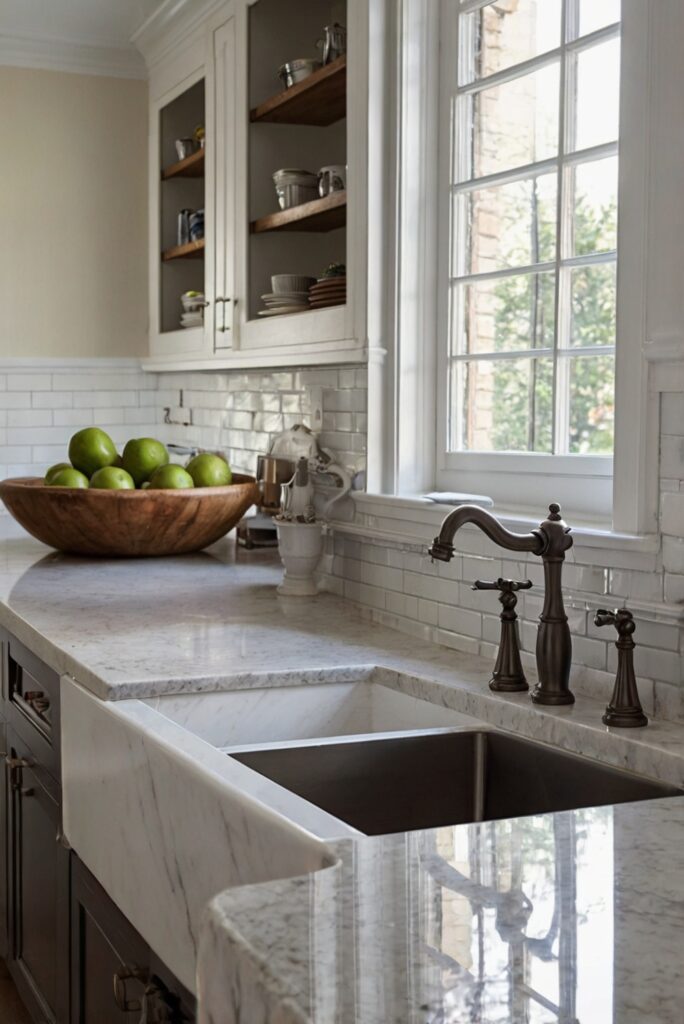Discover the seamless integration of deep basin sinks in your kitchen design. Find out how to elevate your space with this essential element of interior decor.
To incorporate deep basin sinks into your kitchen design, start by considering the size and layout of your kitchen. Deep basin sinks are typically larger and deeper than regular sinks, so make sure you have enough space for them. Next, choose a style and material that complements your kitchen decor. Stainless steel and porcelain are popular choices for deep basin sinks. When installing the sink, place it near a window for natural light or under cabinet lighting for better visibility. Consider adding a pull-down faucet for added convenience. Deep basin sinks are not only stylish but also practical for washing large pots and pans. Proper space planning is essential for integrating deep basin sinks seamlessly into your kitchen design.
1. Consider the size and layout of your kitchen to ensure the sink fits well.
2. Choose a style and material that complements your kitchen decor (e.g., stainless steel or porcelain).
3. Install the sink near natural light sources for better visibility.
4. Add a pull-down faucet for convenience in washing.
5. Deep basin sinks are practical for washing large items.
6. Proper space planning is crucial for seamless integration into your kitchen design.
Why Deep Basin Sinks are Important in Kitchen Design
Deep basin sinks are crucial in kitchen design for various reasons. Firstly, they provide ample space for washing dishes, pots, and pans, making kitchen chores more efficient. The depth of the sink allows for easy soaking and cleaning of larger items that may not fit in a standard sink. Additionally, deep basin sinks can prevent water splashing, keeping your kitchen countertops dry and clean. Their spacious design also allows for easy food preparation, such as washing vegetables or filling large pots with water.
Choosing the Right Size and Material for Your Deep Basin Sink
When incorporating deep basin sinks into your kitchen design, it is essential to consider the size and material that will best suit your needs. The size of the sink should be proportional to your kitchen space and the amount of daily use it will receive. Stainless steel and granite composite are popular materials for deep basin sinks due to their durability and resistance to stains and scratches. These materials are also easy to clean and maintain, making them ideal for a busy kitchen.
Placement and Installation of Deep Basin Sinks
The placement and installation of deep basin sinks play a significant role in the overall functionality and aesthetics of your kitchen design. Consider placing the sink near the cooking and food preparation areas to streamline your workflow. When installing the sink, ensure that it is properly supported to prevent any sagging or damage to the surrounding countertops. Additionally, choose a faucet style that complements the deep basin sink and enhances the overall look of your kitchen.
Accessorizing Your Deep Basin Sink
Accessorizing your deep basin sink can enhance its functionality and convenience in your kitchen. Consider adding a pull-down spray faucet for easy rinsing of dishes and cleaning of the sink. A sink grid or bottom rack can protect the sink from scratches and dents caused by heavy pots and pans. Installing a soap dispenser or a sink caddy can help keep your kitchen organized and clutter-free. These accessories not only improve the efficiency of your deep basin sink but also add a touch of style to your kitchen design.
Maintaining Your Deep Basin Sink
Proper maintenance is essential to ensure the longevity and performance of your deep basin sink. Regularly clean the sink with a mild soap and water to prevent the buildup of dirt and grime. Avoid using abrasive cleaners or sponges that can scratch the sink surface. Periodically inspect the sink for any signs of leaks or damage and address them promptly to prevent further issues. By following these maintenance tips, you can keep your deep basin sink looking and functioning like new for years to come.
Choose the Right Size:
When incorporating deep basin sinks into your kitchen design, it’s crucial to choose the right size. Consider the dimensions of your kitchen space and the amount of counter space available for installation. Deep basin sinks come in various sizes, so make sure to select one that fits your needs and complements your kitchen layout.
Select the Material Carefully:
The material of your deep basin sink can significantly impact its durability and aesthetic appeal. Common materials include stainless steel, cast iron, and composite granite. Each material has its pros and cons, so choose one that suits your style and maintenance preferences.
Opt for Functional Features:
When adding a deep basin sink to your kitchen design, consider opting for functional features such as built-in draining boards, cutting boards, or colanders. These additional elements can enhance the functionality of your sink and make kitchen tasks more convenient.
Ensure Proper Installation:
Proper installation is key when incorporating deep basin sinks into your kitchen design. Hire a professional plumber to ensure that the sink is securely installed and properly connected to the plumbing system. This will prevent leaks and other issues that may arise from improper installation.
Accessorize for Efficiency:
To maximize the efficiency of your deep basin sink, consider accessorizing with items like a pull-down faucet, soap dispenser, or sink grid. These accessories can make daily tasks like washing dishes or food preparation more manageable and enjoyable.

